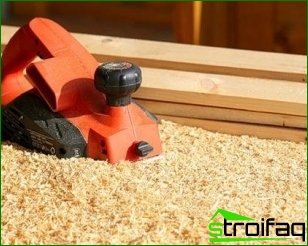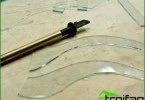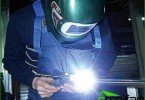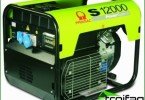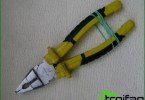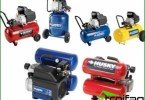If you have ever worked with a planer, then you know how time-consuming the process of refining a tree can be. Unlike their mechanical counterpart, electric planers perform the same work without significant physical effort, and besides, they can be fixedly fixed, thereby turning into a planing machine.
In contrast to the mechanical analogue, electric planers are more convenient and functional in operation. The electric motor takes all the load, and the master only needs to set the direction of the tool. If you are not experienced with this tool, some indentations may form on the surface. Therefore, experts advise you to learn from unnecessary boards. With the help of an electric planer, you can perform preliminary planing, fitting, processing to size, selecting a quarter, mowing the edges, and also do other operations. In order for the tool to work for a long time, be convenient and functional, you should consider recommendations for choosing electric planers.
Getting to the Choice
Almost every power tool can be divided into two huge classes: professional and household models. The differences between them are the duration of continuous operation, power and a set of functions. Here the basic rule is this: if you work from time to time, buy a household model, but when fully loaded, it is better to give preference to a professional tool.
The main characteristics of electric planers include engine power, drum rotation speed, planing depth and tool width. Each of these parameters should be considered when choosing a model..
If you have ever worked with a planer, then you know how time-consuming the process of refining a tree can be. Unlike their mechanical counterpart, electric planers perform the same work without significant physical effort, and besides, they can be fixedly fixed, thereby turning into a planing machine.In contrast to the mechanical analogue, electric planers are more convenient and functional in operation. The electric motor takes all the load, and the master only needs to set the direction of the tool. If you are not experienced with this tool, some indentations may form on the surface. Therefore, experts advise you to learn from unnecessary boards. With the help of an electric planer, you can perform preliminary planing, fitting, processing to size, selecting a quarter, mowing the edges, and also do other operations. In order for the tool to work for a long time, be convenient and functional, you should consider recommendations for choosing electric planers.
Getting to the Choice
Almost every power tool can be divided into two huge classes: professional and household models. The differences between them are the duration of continuous operation, power and a set of functions. Here the basic rule is this: if you work from time to time, buy a household model, but when fully loaded, it is better to give preference to a professional tool.
The main characteristics of electric planers include engine power, drum rotation speed, planing depth and tool width. Each of these parameters should be considered when choosing a model..
The electric plane is driven by an electric motor that rotates the drum with fixed knives. The structure of wood is heterogeneous, therefore it is good if the tool has a high power (at a speed of 10,000 rpm, power is 600 W and higher).
The rotational movement of the electric motor is transmitted to the drum due to the timing belt, which wears out over time. It is not at all difficult to replace it, since it is located under the removable side cover. A smooth increase in speed eliminates any overload of the electric motor when it is turned on. Many planers are equipped with a rotary drum, which is open on one side. Thanks to this, you can choose a quarter along the entire length of the workpiece at right angles. Using the side stop you can select a quarter of the required width.
What else is important to consider
The soles of electric planers are made of cast aluminum, they are divided into two parts, one of which is in front of the drum, and the second at the back. If the surface of the sole is smooth, the workpiece will be processed efficiently. A sole with a longitudinal groove interferes with the formation of an air cushion between the wood being processed and the wood, which prevents the cutting of the same thickness.
Like a manual planer, an electrical analogue allows you to set the cutting depth. To do this, it is necessary to adjust the front of the sole in height. They move vertically, being set in motion by a button or a grip with divisions. With the help of the divisions, you can set the required cutting depth with an accuracy of 0.1 mm. Since the adjustment knob quite often acts as a second handle, it is equipped with internal notches, and to switch it should be raised. If the tool does not have notches, then the settings may be lost during operation. The switching step is usually 0.1 mm, but it is not constant and may vary in different models. It’s best for the scale in the typewriter to start at a mark below zero, as some instruments even at a mark «0» still remove the chips. In addition, the width and length of the sole affect the smoothness and stability of movements of the electric planer in operation.
This tool has another useful feature: with it, you can easily do the job of seam or quarter. To do this, you can use the corner additional emphasis, which limits the width of the planing and helps to keep the angle between the edge of the board or bar and a planer. In addition, a depth limiter can be installed to the right of the planer, which does not allow it to cut excess wood. In addition, the angular emphasis allows you to work with the surface at an angle of 45 and 90 degrees.
So, we examined the main indicators and recommendations for choosing planers. With this information in mind, you’ll be able to choose the tool that suits your needs..
